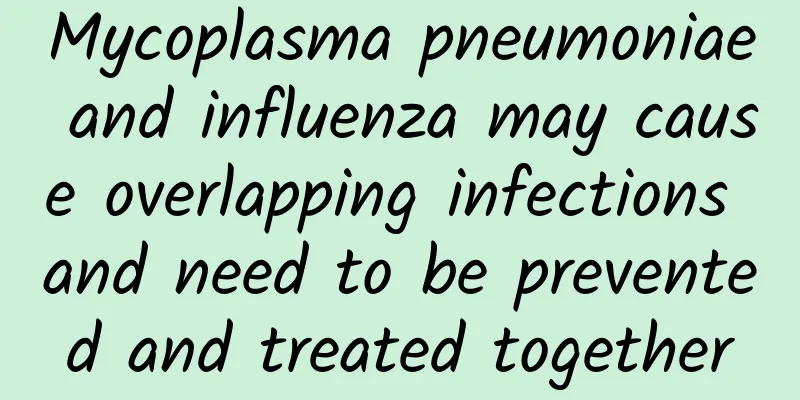Do you know? Open the door┋There are many types of food poisoning, please save the prevention guide!

|
Contributing expert: Li Caihong, Urumqi First People's Hospital, Chief Technician (Nutrition), Member of Chinese Nutrition Society, Member of Xinjiang Nutrition Society Review experts: 1. Chen Xinle, former chief physician of food hygiene at the Autonomous Region Center for Disease Control and Prevention, popular science expert at the Autonomous Region Association for Science and Technology, Chinese registered nutritionist, and the fifth director of the Xinjiang Nutrition Society 2. Jin Yingzi, professor at Xinjiang Light Industry Vocational and Technical College, registered dietitian in China, executive director of Xinjiang Nutrition Society, member of the expert committee of the Xinjiang Food Safety Committee Food safety has always been one of the focuses of people's attention. On January 1, 2020, the National Health Commission issued a notice on the issuance of the foodborne disease monitoring and reporting work specifications (trial) and the appendix lists 35 types of foodborne disease reports. Food poisoning belongs to the category of foodborne diseases and is the most common foodborne disease. In daily life, we often encounter various food poisoning incidents. The causes of food poisoning vary, but the onset of the disease has many common characteristics. Professional knowledge popularization - Characteristics of food poisoning: 1. The incubation period is short, the disease comes on suddenly and is explosive, and several people may become ill in a short period of time. The disease is related to food, and the patients have a history of eating the same contaminated food; once the supply of contaminated food is stopped, the epidemic will end. 2. The clinical manifestations of poisoned patients are basically similar, mainly gastroenteritis symptoms such as nausea, vomiting, abdominal pain, diarrhea, etc. 3. There is no direct transmission between people. These characteristics are important for diagnosing food poisoning. Below, we will learn about four common types of food poisoning. 1. Chemical food poisoning The main sources of chemical food poisoning are pesticide poisoning, nitrites, pesticides, zinc, clenbuterol and other chemical harmful substances. First aid and prevention: 1. Pesticide poisoning Organophosphorus pesticides are relatively stable in acidic solutions and easily decompose and lose their toxicity in alkaline solutions. Therefore, most organophosphorus pesticides can be decomposed and destroyed when they come into contact with alkaline substances such as soap, alkaline water, and soda water. The exception is trichlorfon, which becomes more toxic when it comes into contact with alkali. Prevention tips: 1. When purchasing fruits and vegetables, try to choose those that are seasonal, fresh, and have no odor. 2. Some vegetables and fruits that are eaten raw should also have their skin washed, disinfected or peeled before eating. 3. When processing vegetables, use running water to brush them repeatedly. Leafy vegetables should be broken apart and brushed piece by piece at least three times, and should be washed before cutting. 4. It is prohibited to eat livestock and poultry killed by pesticides. 2. Nitrite poisoning Nitrite is highly toxic, with a biological half-life of 24 hours. Ingestion of 0.3-0.5g can cause poisoning, and 1-3g can cause death. Nitrite poisoning develops rapidly, with an incubation period of 1-3 hours, or as short as 10 minutes. Poisoning caused by eating large amounts of vegetables can last up to 20 hours. The main symptoms of poisoning are cyanosis of the lips, nails and skin of the whole body, which is also called "enterogenic cyanosis". The patient's subjective symptoms include dizziness, headache, fatigue, chest tightness, rapid heart rate, drowsiness or irritability, rapid breathing, nausea, vomiting, abdominal pain, diarrhea, and in severe cases, coma, convulsions, incontinence, and death due to respiratory failure. Prevention tips: 1. Vegetables that have been stored for a long time will gradually produce nitrite, so do not eat vegetables that have been stored for too long or have spoiled. Leftover cooked vegetables should not be stored at high temperatures for too long. 2. The salt content added when pickling vegetables should reach more than 12%, and they need to be pickled for at least 20 days before being eaten. 3. Eat less canned meat. 3. Zinc poisoning The incubation period of zinc poisoning is very short, only a few minutes to 1 hour. Clinically, it mainly manifests as gastrointestinal irritation symptoms, such as nausea, persistent vomiting, upper abdominal cramps, burning and spicy sensations in the mouth, accompanied by dizziness and general discomfort. The body temperature does not rise or may even drop. Severely poisoned people may collapse due to severe vomiting and diarrhea. Prevention tips: 1. Galvanized containers and tools must not come into contact with acidic foods during food processing, transportation and storage. 2. Foods high in zinc, such as scallops and oysters, should not be eaten every day. It is recommended to eat them once or twice a week. 3. Zinc supplements should be taken under the guidance of a doctor and not blindly. 4. Prevention of Clenbuterol 1. Try to purchase fresh meat from markets with complete qualifications and guaranteed quality. 2. If the meat is dark in color, unusually bright in texture, with very thin fat, obvious separation between fat and lean meat, and yellow liquid flowing out, it is possible that clenbuterol has been used and is not recommended for consumption. 2. Food poisoning from poisonous animals and plants I believe that young friends are not unfamiliar with shellfish (mussels, clams, oysters, scallops, etc.), and many people even love to eat them and can't stop eating them. However, it is indeed one of the sources of food poisoning from poisonous animals and plants. In addition, puffer fish, fish with high histamine content (mackerel, herring, sardines, saury, etc.), poisonous mushrooms (commonly known as poisonous mushrooms), cyanogenic foods (bitter almonds, peach kernels, plum kernels, cassava, etc.), cottonseed oil, etc. are all sources of poisonous animals and plants. First aid and prevention: 1. Poisonous mushroom poisoning Mushrooms are usually called mushrooms. Poisoning often occurs in spring and summer. Due to the large number of species, the clinical manifestations of poisoning are also many, such as gastrointestinal type, hemolytic type, neurological type, liver damage type, photosensitivity type, etc. Prevention tips: The most fundamental way to prevent poisoning from poisonous mushrooms is to avoid picking mushrooms that you do not recognize. The morphological feature identification method refers to identifying whether a mushroom is poisonous by observing the shape, color, smell and secretions of the fruiting body. This method is relatively intuitive and is a summary of human experience in identifying poisonous mushrooms over a long period of time, but it has certain limitations. 2. Histamine poisoning After eating fish with high histamine content, the face, chest and whole body will be flushed and hot within 10 minutes to 2 hours, and the whole body will feel unwell, conjunctival congestion, headache, dizziness, nausea, abdominal pain, diarrhea, tachycardia, chest tightness, and blood pressure drop. Sometimes urticaria and a burning sensation in the throat may occur. Some patients may have asthma, but the body temperature is generally normal. Prevention tips: 1. Avoid eating stale or spoiled fish, especially those with allergies. 2. The storage time at room temperature is too long or the thawing time cannot be too long. 3. For green-skinned red fish that are prone to histamine production (such as mackerel, tuna, yellowtail, etc.), families can take some detoxification measures before cooking. First, the fish should be thoroughly scrubbed, the head, internal organs and blood clots removed, and then the fish should be cut in half and soaked in cold water. Adding a little vinegar during cooking can reduce the histamine content in the fish. 4. Avoid eating the heads and internal organs of deep-sea fish, such as liver, intestines and ovaries, as these parts contain more toxins. 3. Paralytic Shellfish Poisoning Paralytic shellfish are highly toxic, and 0.5 mg of pure saxitoxin can cause death. There is currently no effective antidote for shellfish poisoning. The effective rescue measure is to induce vomiting, gastric lavage, and catharsis as soon as possible to remove the toxin in time, and at the same time treat the symptoms. Prevention tips: Try not to eat shellfish during the red tide season. When eating shellfish, remove the internal organs and eat the shellfish meat, and avoid drinking the soup. 4. Cyanogenic food poisoning The toxic component of cyanogenic food poisoning is cyanogenic glycosides , of which bitter almonds have the highest content, averaging 0.1%, while other nuts average 0.4% to 0.9%. The incubation period of bitter almond poisoning ranges from 0.5 hours to 12 hours, and is generally 1.0 to 2.0 hours. Bitter almond poisoning can cause bitterness in the mouth, salivation, dizziness, headache, nausea, vomiting, palpitations, and weakness in the limbs. In more serious cases, the patient may experience chest tightness, difficulty breathing, and the smell of bitter almonds when breathing. In severe cases, the patient may experience unclear consciousness, weak breathing, coma, cold limbs, followed by loss of consciousness, dilated pupils, loss of light reflex, clenched teeth, paroxysmal spasms of the whole body, and finally death due to respiratory paralysis or cardiac arrest. In addition, it can also cause multiple neuritis. Prevention tips: 1. Do not eat bitter almonds and other nuts, including dry-fried nuts. 2. When eating cassava, hydrogen cyanide can also be volatilized by peeling, steaming, etc. 3. Fungal and moldy food poisoning Wheat, corn, sugarcane, etc. that are not properly stored and become moldy can cause fungal and moldy food poisoning. The incubation period is generally 10 to 30 minutes, but can be as long as 2 to 4 hours. The main symptoms include nausea, vomiting, abdominal pain, dizziness, headache, drowsiness, salivation, fatigue, and a few patients have fever and chills. First aid and prevention: After sugarcane poisoning, vomiting, gastric lavage, and enema should be performed as soon as possible to eliminate the poison, and symptomatic treatment should be given. Since there is no special method at present, you should not buy or eat moldy sugarcane. Immature sugarcane is easy to mold, so it should be harvested after it matures. In order to prevent sugarcane, wheat, and corn from mold, the storage time should not be too long. 4. Bacterial Food Poisoning A herdsman in Xinjiang suffered from headache, dizziness, blurred vision and other symptoms after eating homemade fermented bean products. The patient's symptoms were caused by Clostridium botulinum, which is common in homemade plant fermented products, such as stinky tofu, bean paste, noodle sauce, etc. There are also reports of poisoning caused by canned and bottled foods and cold dishes. Animal meat, poultry meat, fish, milk, eggs, leftover rice, rice cakes, rice noodles, etc. are easily contaminated by pathogenic bacteria. Among them, animal food is the main food that causes bacterial food poisoning. The family of bacteria is quite large, and the common ones include Salmonella, Proteus, Staphylococcus aureus, Vibrio parahaemolyticus, Bacillus cereus, etc. Some researchers have tested various samples for Staphylococcus aureus and found that the highest detection rate was 3.9% in meat products, followed by 2.5% in raw milk, 2.0% in fresh meat, 1.3% in dairy products, and 0.9% in aquatic products. Prevention tips: 1. Utensils for raw and cooked food should be kept separate and disinfected to prevent cross contamination. 2. Food should be heated thoroughly before consumption, especially meat, which should be cooked until the center turns gray and has no blood. Cooked meat products should be heated thoroughly again after being left out for a long time before consumption. 3. All kinds of food, especially seafood and various cooked products should be stored at low temperatures. The optimal temperature for Salmonella to reproduce is 37°C, but it can reproduce in large quantities above 20°C. The above are some common food poisoning-related situations that must be kept in mind. In this way, we can better prevent them in our daily lives. References: [1] Sun Changhao: Nutrition and Food Hygiene (6th Edition) [M], Beijing: People's Medical Publishing House. 2007. [2] Sun Changhao: Nutrition and Food Hygiene (8th Edition) [M], Beijing: People's Medical Publishing House. 2017. [3] Ren Jianchao. Research on emergency management of food safety incidents[D]. China Agricultural University, 2017. [4] Li Linjing, Li Gaoyang, Xie Qiutao. Research progress on classification and identification of poisonous mushroom toxins[J]. Chinese Journal of Food Hygiene, 2013, 25(04): 383-387. [5] Liu Baoguang, Xie Miao, Dong Ying, et al. Current status of research on Staphylococcus aureus[J]. Advances in Veterinary Medicine, 2021, 42(04): 128-130. |
>>: How much do you know about otolithiasis?
Recommend
How to respond when a girl says she has a stomachache
There are many reasons for girls' abdominal p...
There are 5 common cognitive misunderstandings in the treatment of hypertension that should be avoided
Blood pressure fluctuates with the seasons. When ...
Doing these 9 things can delay cardiovascular disease by 10 years!
This article was reviewed by Zhang Mingzhi, a pos...
Pregnant woman's hands swollen in the morning
During pregnancy, the health of the pregnant woma...
What to eat for delayed menstruation
Delayed menstruation is a situation that women of...
A woman's dead heart
Giving up on someone is difficult to say, but it ...
Why does my lower abdomen start to hurt three days after the miscarriage?
For couples who want to have a healthy baby, misc...
How to make carrot juice? Simple method of carrot
Carrots are a kind of vegetable that we often eat ...
What to eat during 5 months of pregnancy is good for the fetus
In the fifth month of pregnancy, nutrition should...
How to prevent fetal arrest after the fetal heartbeat
Everyone knows that if the fetus stops growing, a...
How will pregnant women react to fetal hypoxia in late pregnancy?
When pregnant women reach the late stage of pregn...
Snapchat: 90% of Snapchat users feel happy when visiting the social platform
Snapchat has more than 750 million monthly users ...
What to do if progesterone is high during pregnancy
During pregnancy, especially in the early stages ...
What are the symptoms of hemorrhoids in women?
I always hear people say that nine out of ten peo...
Is calcification of breast fibroids serious? What should I do?
Breast diseases are very common among women. Some...









